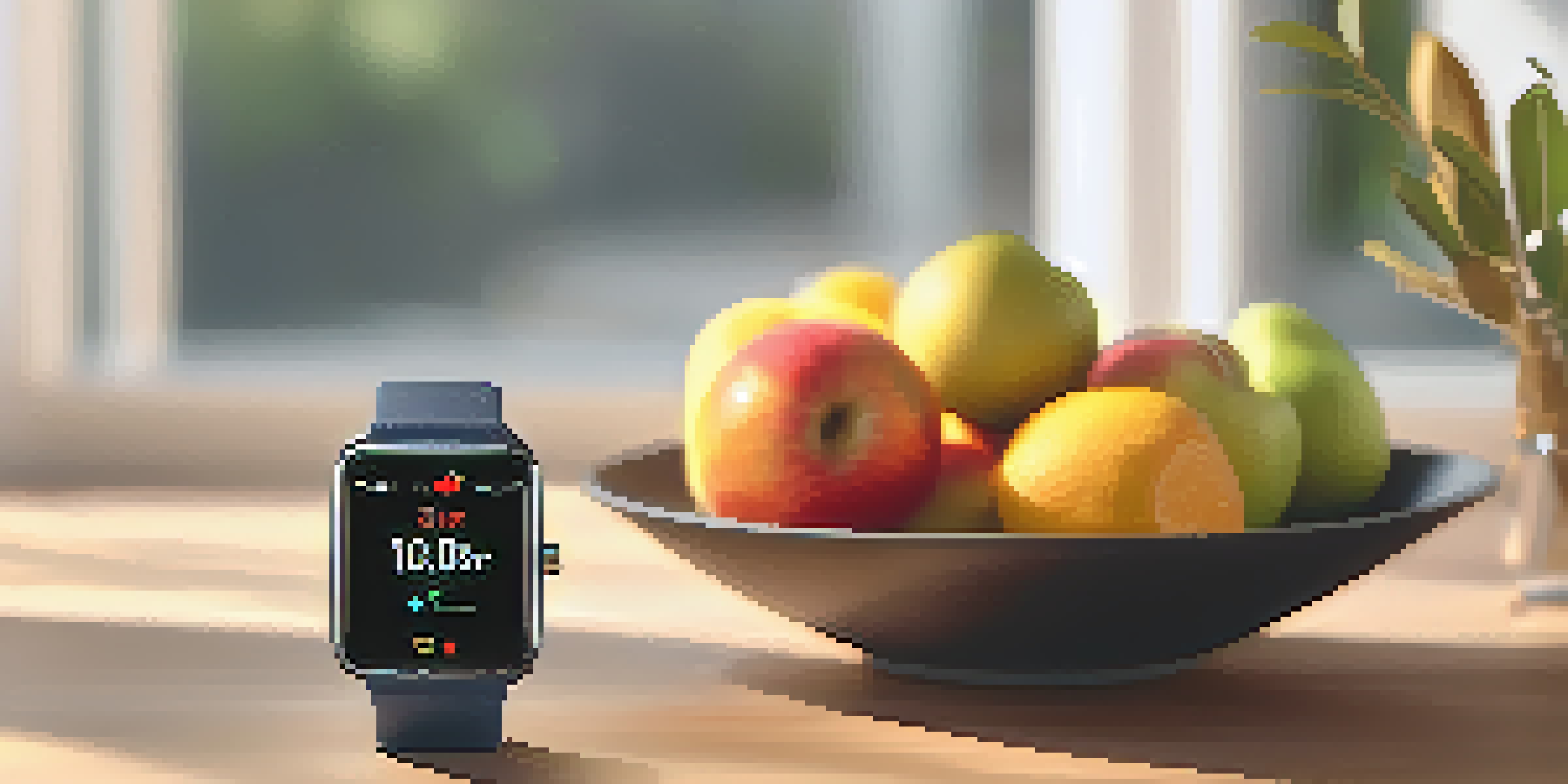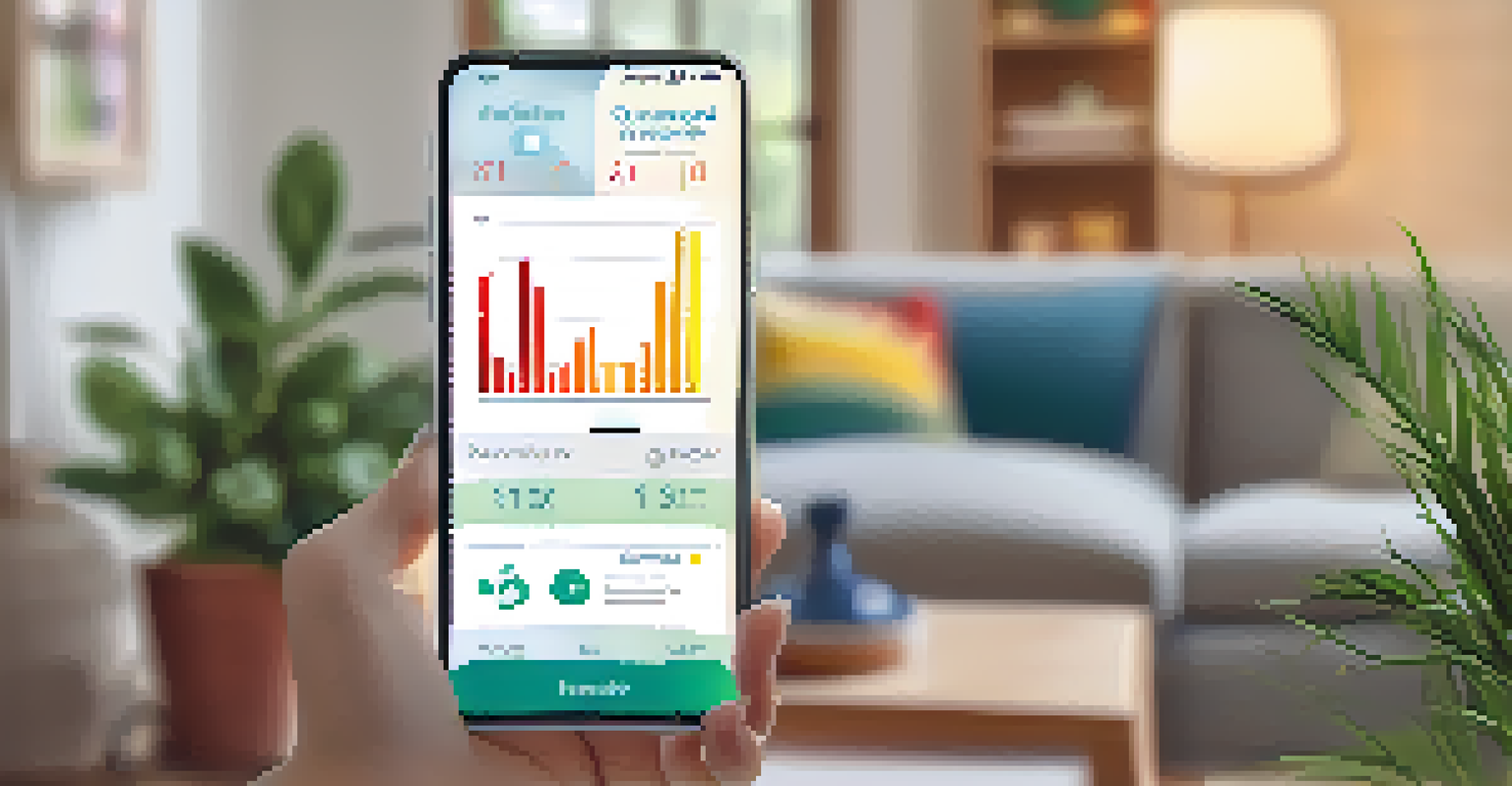Integrating Wearable Technology with Mobile Health Apps

Understanding Wearable Technology in Healthcare
Wearable technology, like fitness trackers and smartwatches, has revolutionized our approach to health monitoring. These devices collect data on various health metrics, from heart rate to sleep quality, making personal health insights more accessible than ever. The integration of this technology into mobile health apps enables users to visualize and track their health more effectively.
Wearable technology is changing the way we monitor our health and wellness, enabling individuals to take control of their health like never before.
Imagine wearing a smartwatch that not only counts your steps but also syncs directly with your health app, providing real-time feedback. This seamless connection allows individuals to stay informed about their wellness journey, promoting proactive health management. With this data at their fingertips, users can make informed decisions about their lifestyle.
Moreover, the convenience of wearable devices means users are more likely to engage consistently with their health data. This ongoing interaction can lead to better health outcomes, as individuals are motivated to maintain or improve their fitness levels, ultimately contributing to a healthier society.
The Role of Mobile Health Apps in Wellness
Mobile health apps serve as a centralized hub for personal health information, providing users with insights and guidance tailored to their needs. These applications often include features such as goal setting, reminders, and educational resources, making it easier for users to adopt healthier lifestyles. They empower users to take charge of their health by providing actionable data and support.

For instance, a user might set a goal to walk 10,000 steps a day, and the app will send reminders and track progress towards that goal. By integrating data from wearable devices, these apps can offer personalized advice based on real-time performance. This not only fosters accountability but also enhances motivation.
Wearables Enhance Health Monitoring
Wearable technology simplifies health tracking by providing real-time data on various health metrics, empowering users to make informed decisions.
As the health landscape continues to evolve, mobile health apps are increasingly becoming essential tools for managing chronic conditions, tracking nutrition, and promoting mental well-being. Users can access their health information anytime, anywhere, providing them with the flexibility to make healthier choices.
Benefits of Integrating Wearables with Health Apps
The integration of wearable technology with mobile health apps comes with numerous benefits, first and foremost being enhanced data accuracy. Wearables continuously monitor health metrics, resulting in real-time data that is often more precise than self-reported information. This accuracy can lead to more effective health interventions and insights.
The future of healthcare is in the hands of patients, and wearable devices are empowering them to be active participants in their health journey.
Additionally, integrating wearables with health apps promotes user engagement. When individuals see the immediate effects of their efforts—like how their steps translate into calories burned—they are more likely to stick with their health goals. This dynamic feedback loop can be a game changer for maintaining motivation over the long term.
Finally, the combination of wearables and health apps can foster a sense of community among users. Many apps offer features that allow users to share their achievements, join challenges, or connect with friends, creating a supportive environment that encourages collective progress towards health goals.
Challenges in Integration: Data Privacy and Security
Despite the many advantages, integrating wearable technology with mobile health apps presents challenges, particularly regarding data privacy and security. As users share sensitive health information, ensuring this data is protected from breaches is crucial. Companies must prioritize security measures to maintain user trust.
For example, implementing encryption can help safeguard user data, ensuring that personal health information remains confidential. Additionally, users should be educated about the importance of secure passwords and the risks associated with sharing their health data online. Awareness is key to protecting personal information.
Mobile Apps Centralize Health Data
Mobile health apps integrate data from wearables, offering personalized insights and fostering user engagement in health management.
Moreover, developers must navigate regulations and compliance standards related to health data. Striking a balance between user convenience and data security is essential for fostering a sense of trust and reliability in the technology, ultimately encouraging more users to embrace these innovative solutions.
Future Trends in Wearable Tech and Health Apps
Looking ahead, the future of wearable technology and mobile health apps is promising, with trends like artificial intelligence (AI) set to transform the landscape. AI can analyze vast amounts of health data to provide personalized recommendations, enhancing the user experience. This technology can help identify patterns and predict potential health issues before they arise.
Another trend includes the rise of remote patient monitoring, especially in the context of chronic disease management. Wearables that track vital signs can send alerts to healthcare providers, allowing for timely interventions and more personalized care. This proactive approach can significantly improve patient outcomes and reduce healthcare costs.
Lastly, we can expect an increase in user-friendly interfaces and gamification elements in health apps. By making health management more engaging and interactive, users are likely to feel more motivated to participate in their wellness journey, fostering a culture of health and fitness that benefits society as a whole.
Real-World Examples of Successful Integration
Several companies have successfully integrated wearable technology with mobile health apps, showcasing the potential of this approach. For instance, Fitbit offers a comprehensive app that not only tracks fitness data but also provides insights into users' sleep patterns and stress levels, encouraging a holistic view of health.
Another example is Apple Health, which consolidates data from various devices and apps, allowing users to view their health metrics in one place. This integration creates a user-friendly experience and empowers individuals to make informed decisions about their wellness. The ability to track and analyze health data seamlessly can lead to better health outcomes.
Data Privacy Remains a Concern
While integrating wearables and apps offers numerous benefits, ensuring the security and privacy of sensitive health information is vital for user trust.
These real-world examples demonstrate the effectiveness of integrating wearables with health apps, providing users with the tools they need to take charge of their health. As technology continues to evolve, we can expect even more innovative solutions that enhance the user experience and promote overall well-being.
Conclusion: Embracing the Future of Health Monitoring
In conclusion, integrating wearable technology with mobile health apps represents a significant advancement in personal health management. The synergy between these tools offers users unprecedented access to their health data, encouraging proactive and informed decision-making. As technology continues to advance, the potential for improved health outcomes is vast.
However, it is essential to address challenges such as data privacy and security to build user trust and ensure widespread adoption. By prioritizing user education and implementing robust security measures, the industry can foster an environment conducive to health innovation.

Ultimately, embracing this integration not only empowers individuals to take charge of their health but also paves the way for a healthier future. As we continue to explore the endless possibilities of wearable technology and mobile health apps, we can look forward to a world where health monitoring is more accessible, effective, and engaging than ever before.